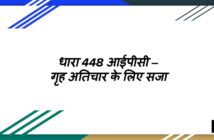Section 498A of IPC deals with cruelty against a woman by her husband or his relatives. This is a powerful law enacted to protect the prevalence of domestic abuse in India. In this article, we will discuss police procedures for arresting under Section 498A of the Indian Penal Code.
Guidelines for police officers to curb unnecessary arrest and detention
Section 498A of the IPC has been misused by the accused to take revenge or harass the in-laws of the wife. Keeping in mind this situation, the court had put forward the following guidelines for the police officers to curb unnecessary arrest and detention. (Arnesh Kumar vs The State of Bihar).
a) The State Government should instruct the police officer that, when any Section 498A case is registered, the police officer should satisfy itself that the situation comes under Section 41 of Cr.P.C. and should not automatically arrest the accused.
b) Checklist given under Section 41 of Cr. P.C should be given to all the police officers;
c) Whenever an accused is produced before the Magistrate to detain further, the police officer should furnish the checklist and record the reason for arresting the accused;
d) The Magistrate shall only after analyzing the police report regarding the arrest, and being satisfied by the reason provided, authorize further detention of the accused.
e) If the accused need not have to be detained any further, then the Superintendent of Police of the district should forward such decision in writing to the Magistrate within 2 weeks from the date the case is registered.
f) The accused should be given a notice of appearance under Section 41A of Cr.P.C. within 2 weeks from the date the case is registered. However, the date can be extended by the Superintendent of Police of the District with a written reason.
g) In the event of failure to comply with the above guidelines, the police officer will be liable for departmental action and contempt of court by the concerned High Court.
h) If the Judicial Magistrate fails to record the reason for authorizing detention of the accused, then such magistrate will be liable for departmental action by the concerned High Court.
It is to be noted that, the above guidelines are not only for cases under Section 498 A of IPC and Section 4 of Dowry Prohibition Act but also for other cases where the punishment is for less than or up to 7 years with or without fine.
Now we will look into the checklist provided under Section 41 (1)(b)(iii) of Cr.P.C. that all police officer has to observe.
Section 41(1)(b)(iii) of Cr.P.C. states that:
If the police officer is satisfied that the arresting of the accused is necessary –
a) To prevent that person from further committing any offence;
b) To investigate the case thoroughly;
c) To prevent that person from tampering with the evidence or cause to disappear any evidence in any way;
d) To prevent that person to threat, induce, or promise any person who is acquainted with the facts of the case, so as to persuade such person from disclosing those facts before any police officer or Court;
e) To ensure the presence of that person in the Court; when there is no surety of that person to appear before the Court.
And lastly, for every arrest, the police officer shall record its reason of arrest in writing. It is further provided that, where the arrest of the person is not necessary, the police officer should give its reason in writing for not arresting that person.
Conclusion
Section 498 A of the IPC has provided punishment to the husband and relatives of the husband for torturing and harassing the wife to fulfil their demand for valuable security. However, it is observed the Section 498A of the IPC has been misused widely by women to lodge false cases and harass men and his family. Therefore, the court has laid down guidelines to prevent the arrest of the innocent. You can check for the procedure for withdrawal of complaints filed under Section 498A and how to fight against a false 498A case.

